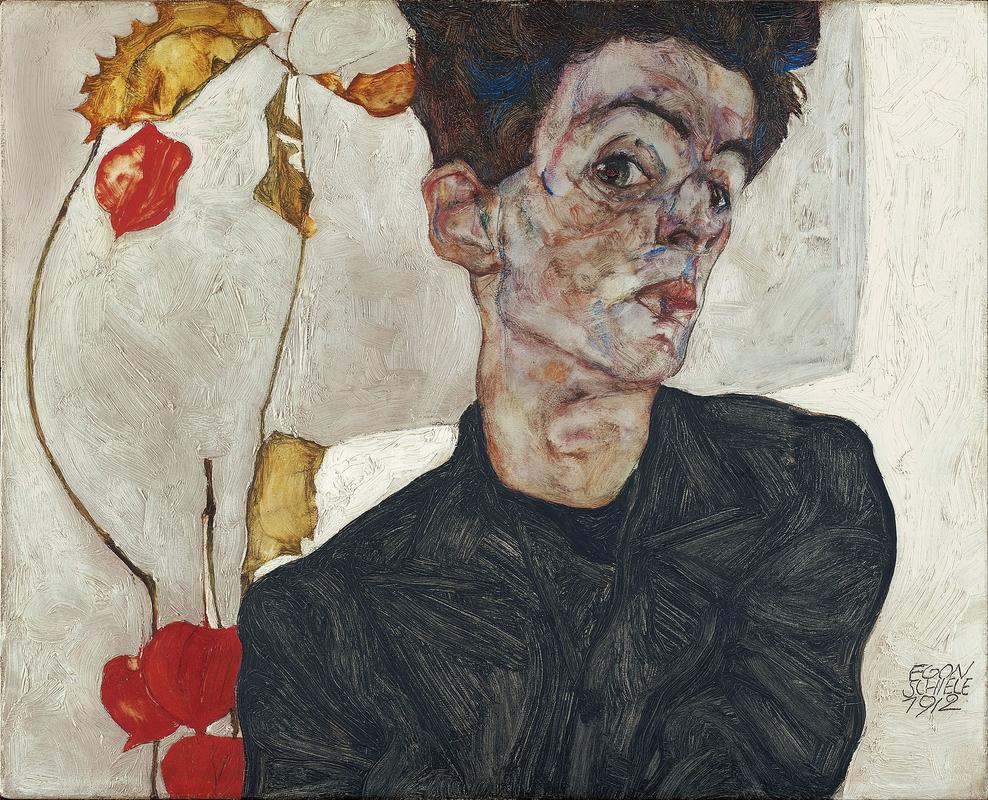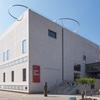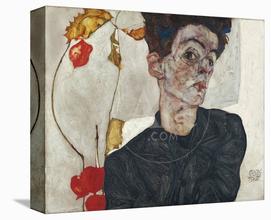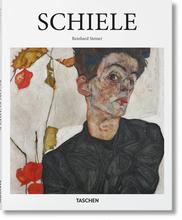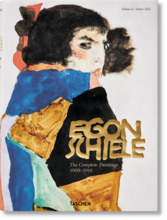More about Self-Portrait with Chinese Lantern Plant
- All
- Info
- Shop

Contributor
Egon Schiele's Self-Portrait with Physalis is one of his last artworks to be independent of the shame and humiliation brought about by the artist’s wrongful arrest for kidnapping and assaulting an underaged girl.
The year was 1912 and the social climate was, to put it lightly, conservative. This was especially the case in the small town of Neulengbach, 30 miles west of Vienna, where Schiele and his girlfriend, Wally went (and lived together *gasp*) when he wasn’t making money in Vienna. There was no room for degenerates like Egon Schiele there and the villagers were practically waiting for Egon to misstep. And misstep he did. Schiele’s studio was one that children in the village visited frequently. When one of these children, Tatjana Georgette Anna von Mossig, convinced Egon and Wally to take her to Vienna, Egon was taken into custody for her kidnap and rape. “He was quickly cleared of those crimes, but not of ‘immorality,’ an accusation that arose from some erotic drawings that had been seen in his studio by several of the village’s children.” He was in jail for a total of 24 days, but the impact that his imprisonment had on his career lasted a lifetime.
So, Self-Portrait with Physalis one of the last works the artist made before veering down a path of self-consciousness and disgust. Schiele made it when he was 22 years old and it is one of his most famous self portraits. “The various elements of the composition are arranged in a balanced web of reciprocal relationships: the raised and the lowered shoulder, the head turned to the side and the eyes looking in the other direction, the slender but incisive stems of the lantern fruit plant with the powerful red of the blossoms. Nothing is left to chance. Each and every line has its continual correspondence. The hair and body are deliberately cut off at top and bottom, matching each other.” He is seemingly depicting himself as a sensitive guy with a heart of gold minus the red pupils that give him an Edward Cullen vibe, which, if I’m going to be honest, still does it for the 7th grade girl in me.
The Leopold Museum houses the most extensive collection of Egon Schiele’s work anywhere. Rudolph Leopold almost single-handedly brought the artist to prominence, which is cool, but he may not have amassed such a collection without the help of Nazi looters. Two works by Schiele, while on view in New York, were claimed by the families of victims of the Holocaust. Rudolph Leopold insisted, “I’m not a Nazi and I’m not a Nazi profiteer,” and that his family was against the Nazi regime, but for years the paintings were held up in court after eventually being returned to the collection… Something doesn’t add up.
Sources
- Carroll, Marisa. "The Painting That Launched A Thousand Lawsuits." Hyperallergic. N.p., 2012. Web. 13 Mar. 2018.
- "Egon Schiele, Self-Portrait With Physalis | Masterpieces Of The Collection | The Leopold Collection | Leopold Museum." Leopoldmuseum.org. Web. 13 Mar. 2018.
- Fox, Margalit. "Rudolf Leopold, Art Collector, Dies At 85." Nytimes.com. N.p., 2010. Web. 13 Mar. 2018.
- Jones, Jonathan. "How Egon Schiele Combined High Art And Pornography." the Guardian. N.p., 2003. Web. 13 Mar. 2018.
- Micchelli, Thomas. "Painter, Interrupted: Losing Egon Schiele." Hyperallergic. N.p., 2014. Web. 13 Mar. 2018.
- Micchelli, Thomas. "The Essential Egon Schiele." Hyperallergic. N.p., 2017. Web. 13 Mar. 2018.

